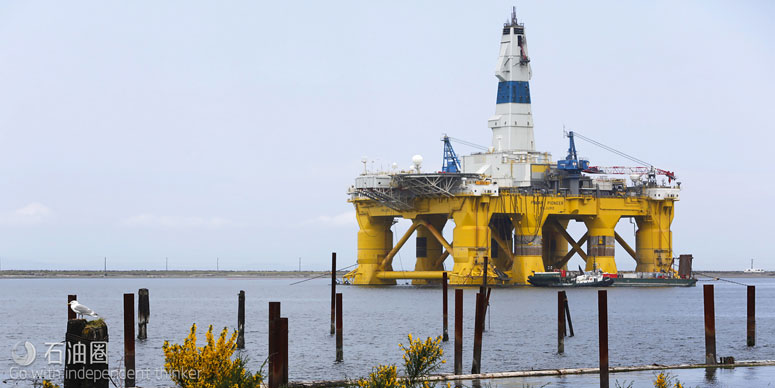When oil prices crashed in 2014, many thought costly deepwater drilling operations would suffer greatly and possibly become more obsolete. Those concerns may have been a little too gloom and doom, much to the chagrin of OPEC.
Drilling for crude thousands of feet below sea water is becoming cheaper as producers have adjusted to a new sub-$100 oil world. Part of those adjustments include streamlining operations and prioritizing drilling in core wells, according to Wood Mackenzie Ltd. This newfound efficiency means oil at $50 a barrel could sustain some of these projects by next year, down from an average break-even price of about $62 in the first quarter and $75 in 2014, the energy consultancy estimates.
The tumbling costs of deepwater drilling expose another challenge for OPEC, which is currently cutting output to reduce a global glut. In 2014, when the U.S. shale boom sparked oil’s crash from above $100 a barrel, the group embraced a different strategy of pumping at will to defend market share and throttle high-cost projects. Ali Al-Naimi, the former energy minister of OPEC member Saudi Arabia, said in February 2016 that such producers need to either “lower costs, borrow cash or liquidate.”
“There is life in deep-water yet,” said Angus Rodger, director of upstream Asia-Pacific research at Wood Mackenzie in Singapore. “When oil prices fell, many projects were deferred, but the ones that were deferred first were deep-water because the overall break-evens were highest. Now in 2017, we’re seeing signs that the best ones are coming back.”
The decreasing costs make it more likely that investors will get on board with more deep-water projects. An increase in deepwater projects could negatively impact the efforts of OPEC supply cuts.
Saudi Arabia’s energy minister Khalid Al-Falih touched upon the deepwater impact recently. In a speech in Malaysia this month, Al-Falih lamented the lack of investment in higher-cost projects and said he fears the lack of them could cause demand to spike above supply in the future.
Warnings from OPEC of an impending shortage are “overstated and misleading,” Citigroup Inc. said in a report earlier this month. According to the bank the transformation in unconventional supplies like shale is “unstoppable” unless prices fall below $40 a barrel, and deep-water output could increase by more than 1 million barrels a day by 2022.
Royal Dutch Shell Plc in February approved its Kaikias deep-water project in the U.S. Gulf of Mexico, saying it would break even with prices below $40 a barrel. That followed BP Plc’s decision in December to move forward with its Mad Dog Phase 2 project in the Gulf. Costs for that project were originally pegged at close to $20 billion and now are all the way down to $9 billion due to increased deepwater efficiency.
Echoing a similar sentiment, Transocean said that over the next three years eight offshore projects may be approved with break-even prices below $50.
As a function of the 2014 price crash, Rodger estimates energy companies shelved projects that would have produced more than 20 billion barrels of oil equivalent since 2014 until the start of 2016. About two-thirds of that were deep-water, he said.
Meanwhile the U.S. shale boom is in full swing. Through increased productivity, companies have driven break-even costs in the best parts of fields from Texas to North Dakota into the $30s. The cost reductions have caused the number of drilling rigs in the U.S. more than double since last year.
That increased activity is causing costs to rise again, though, said Jonathan Garrett, an upstream analyst at Wood Mackenzie. Prices for pressure-pumping equipment and sand have spiked by more than 20 percent this year.
While costs for producing shale, also known as tight oil, are swinging higher now, costs associated with deep-water drilling are finally coming down, Rodger said. Day rates for drilling rigs have been cut in half since 2014, and companies are redesigning projects to be more cost efficient instead of to maximize output.
Deep-water exploration will see “renewed momentum” over the rest of 2017 as large exploration companies look to take advantage of lower service costs, Fitch Group’s BMI Research said in a May 3 note. In the U.S. Gulf of Mexico, a more cost-efficient design for deep-water projects has reduced the break-even cost at many wells to below $40 a barrel, it said.
“The deep-water cost curve is much higher, but over time that deep-water cost curve is coming down and over time that tight oil cost curve is going up a bit,” Wood Mackenzie’s Rodger said. “So there’s still some clear water between the two but it’s now getting closer to each other.”


 石油圈
石油圈
